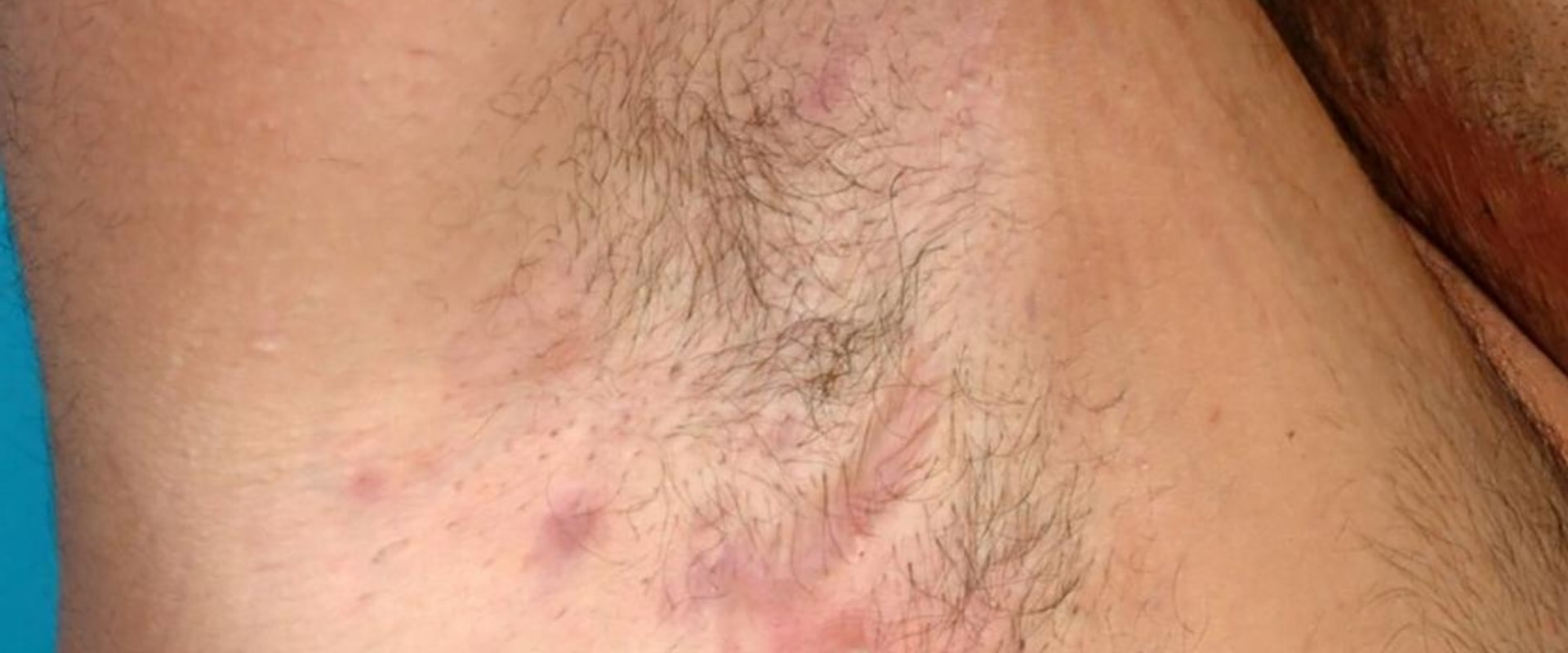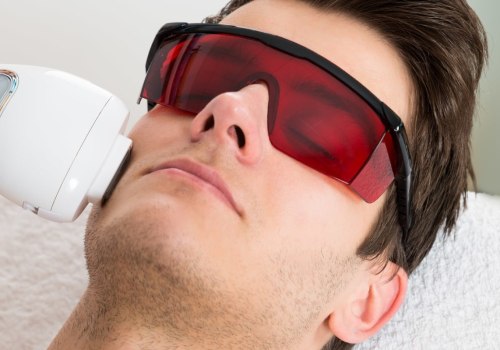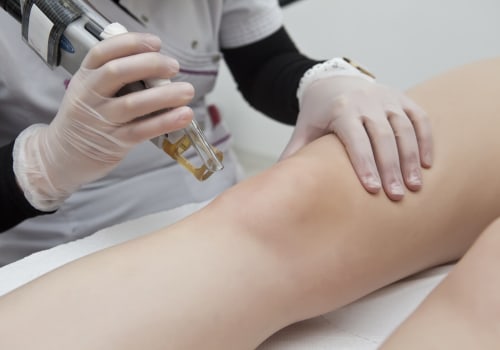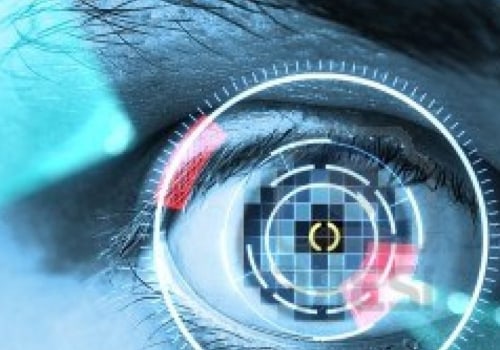Skin scarring and blistering can be a painful and disfiguring problem for many people, and understanding the causes, symptoms, and treatments can help manage this condition. Skin scarring and blistering can be caused by a variety of conditions, including burns, skin infections, and allergic reactions. They can also be the result of certain medical treatments such as laser hair removal. Regardless of the cause, understanding the signs and symptoms can help you take appropriate steps to reduce scarring and blistering. In this article, we'll discuss the causes, symptoms, and treatment of skin scarring and blistering.
We'll also discuss the long-term side effects of laser hair removal that can result in skin scarring and blistering. By understanding these topics, you can make informed decisions about your health and treatments. Skin scarring and blistering is a medical condition characterized by areas of the skin that are raised and thickened, or have blisters filled with a clear or yellowish fluid. It can be caused by a variety of factors, including physical trauma, chemical exposure, and underlying medical conditions. In this article, we'll look at the causes, symptoms, and treatments for skin scarring and blistering, as well as the potential long-term side effects of laser hair removal.
The most common cause of skin scarring and blistering is physical trauma. This can include cuts, burns, scrapes, and insect bites. Chemical exposure is another potential cause. This can be due to contact with an irritant substance or contact with an allergen.
Certain medical conditions can also lead to skin scarring and blistering. These include autoimmune disorders, such as lupus and dermatomyositis, as well as skin diseases, such as psoriasis and eczema. The symptoms of skin scarring and blistering vary depending on the cause. In general, the affected area may be raised and thickened, with a discolored appearance.
Blisters may also form, which can be filled with a clear or yellowish fluid. In some cases, the blisters may break open and weep a serum-like substance. The affected area may also be painful and itchy. Treatment for skin scarring and blistering depends on the cause.
For physical trauma or chemical exposure, treatment may involve wound cleaning and dressing changes, as well as topical medications to help reduce itching and inflammation. For medical conditions, treatment options may include topical medications, such as corticosteroids and retinoids, as well as systemic medications, such as immunosuppressants or biologic drugs. In some cases, surgical procedures may be used to treat severe cases of skin scarring and blistering. Laser hair removal can also lead to skin scarring and blistering in some cases.
The most common long-term side effect of laser hair removal is hyperpigmentation — darkening of the skin in the treated area — but it can also cause permanent scarring or blistering in some cases. The risk of these side effects is higher in people with darker skin tones. To prevent skin scarring and blistering, it's important to take steps to protect your skin from physical trauma and chemical exposure. Wear protective clothing when working with hazardous materials or in high-risk environments.
It's also important to practice good skincare habits to help keep your skin healthy and free from irritation. If you're considering laser hair removal, talk to your doctor about the potential risks and benefits before you proceed.
What are the Symptoms of Skin Scarring and Blistering?
Skin scarring and blistering can manifest in a variety of ways, depending on the underlying cause. Common symptoms include redness and swelling, itching and burning, pain, and changes in skin color. In severe cases, blisters may form on the skin and be filled with fluid or pus.In some cases, the skin may become thickened or leathery. Additionally, scars may form on the skin, which can be raised, pitted, or discolored. It's important to note that not all skin scars and blisters are the same; they can vary in size, shape, color, and texture. Some may resolve on their own while others may require medical treatment.
If you experience any of these symptoms, it's important to consult a doctor to determine the underlying cause and best course of action.
What Can I do to Prevent Skin Scarring and Blistering?
When it comes to preventing skin scarring and blistering, there are a few things you can do to reduce your chances of developing the condition. First, use sunscreen when outdoors to protect your skin from the sun's ultraviolet rays. Additionally, take extra caution when using chemical-based products on your skin, such as hair dyes, and always wear protective gloves.Additionally, if you have a history of skin scarring or blistering, avoid activities or lifestyles that may increase your risk of further skin damage. Finally, always practice good hygiene habits and take care of any wounds or cuts quickly and properly. If you have had laser hair removal treatment, be sure to follow all instructions provided by the practitioner and take any prescribed medications as directed. It's also important to take extra precautions to avoid activities that could cause further trauma to the treated area.
What Causes Skin Scarring and Blistering?
Skin scarring and blistering can be caused by a variety of factors. It can be caused by physical trauma, such as abrasions or burns, as well as chemical exposure, such as certain medications or cosmetics.It can also be caused by an underlying medical condition, such as psoriasis, eczema, or other inflammatory skin conditions. In some cases, skin scarring and blistering may be the result of an allergic reaction to a medication, food, or other substance. Infections may also cause skin scarring and blistering. These include bacterial or fungal infections, such as impetigo or ringworm.
Viral infections, such as chickenpox or shingles, can also cause scarring and blistering. In rare cases, skin scarring and blistering can be the result of an autoimmune disorder, such as lupus or scleroderma.
How is Skin Scarring and Blistering Treated?
Treating Skin Scarring and BlisteringThe treatment of skin scarring and blistering depends on the underlying cause. In some cases, such as when the condition is caused by an underlying medical condition, the scarring or blistering may be treated with topical medications or other medications prescribed by a doctor.Other treatments for skin scarring and blistering may include:•Steroid injections: These injections can help reduce inflammation and prevent further scarring or blistering. •Laser therapy: Laser therapy can help reduce the appearance of scarring or blistering and promote healing. •Cryotherapy: Cryotherapy involves freezing the affected area to reduce inflammation and improve the appearance of the skin. •Dermabrasion: Dermabrasion is a surgical procedure that uses an abrasive instrument to remove the top layer of skin in order to reduce the appearance of scarring or blistering.
•Skin grafts: Skin grafts involve taking healthy skin from one area of the body and using it to cover an affected area. This can help reduce the appearance of scarring or blistering.•Surgery: Surgery may be used to remove scar tissue or blisters if they are causing pain or discomfort. In addition to medical treatments, there are several lifestyle modifications that can help reduce the risk of skin scarring and blistering. These include avoiding sun exposure, wearing sunscreen, keeping skin moisturized, avoiding smoking, and eating a healthy diet.
Are there any Long-term Side Effects of Laser Hair Removal?
Laser hair removal can be a great way to get rid of unwanted hair and achieve smoother, clearer skin. However, there are some potential long-term side effects that should be considered before undergoing the procedure.These may include skin discoloration, scarring, and blistering.
Skin Discoloration
One potential long-term side effect of laser hair removal is skin discoloration. This can occur if the laser damages the skin's pigment-producing cells. This can result in blotchy or patchy skin, as well as areas of hyperpigmentation or hypopigmentation. People with darker skin tones may be at a higher risk for this side effect.Scarring and Blistering
Another potential long-term side effect of laser hair removal is scarring and blistering.The laser can cause burns on the skin, which can lead to scarring or blistering. People with darker skin tones may also be at a higher risk for this side effect. To reduce the risk of scarring and blistering, it is important to follow the aftercare instructions provided by your doctor.
Treatments
If you experience any of these long-term side effects, it is important to seek medical attention right away. There are a variety of treatments available for skin discoloration, scarring, and blistering.These may include laser treatments, topical creams, and surgical procedures. Your doctor will be able to recommend the best treatment option for you.
What is Skin Scarring and Blistering?
Skin scarring and blistering are skin conditions caused by a variety of factors. In the case of scarring, the skin has been damaged and replaced with collagen, leading to a raised or sunken appearance. Blistering, on the other hand, occurs when the top layer of skin is damaged and fluid accumulates between the layers of skin.Both scarring and blistering can have long-term effects on the skin’s appearance, as well as potential health risks. The most common causes of skin scarring and blistering include sunburn, chemical exposure, physical trauma, infection, and certain medical conditions. Sunburns are the leading cause of skin scarring and blistering, especially in areas where the skin is particularly sensitive. Chemical exposure can also lead to damage and scarring of the skin, as can physical trauma such as cuts, scrapes, and burns.
In some cases, skin scarring and blistering can be caused by an underlying medical condition such as psoriasis or eczema. The most common symptom is a change in the appearance of the skin, including discoloration, raised or sunken patches, and changes in texture. Other symptoms include itching, pain, burning, swelling, and tenderness. For sunburns, it may be as simple as applying a cool compress or aloe vera gel to reduce swelling and itching.
In cases of chemical exposure or physical trauma, seeking medical attention is recommended in order to identify any potential underlying causes. For medical conditions such as psoriasis or eczema, a doctor may prescribe topical medications or light therapy. Skin scarring and blistering can be caused by a variety of factors, including underlying medical conditions, physical trauma, and chemical exposure. Symptoms of skin scarring and blistering vary depending on the underlying cause, but may include itching, redness, dryness, raised bumps, and changes in skin color. Treatment for skin scarring and blistering usually involves medication, surgery, or laser therapy.
Laser hair removal can also cause long-term skin scarring and blistering. To prevent skin scarring and blistering, it is important to avoid direct sun exposure, wear sunscreen when outdoors, and avoid harsh skin care products. If you are experiencing any symptoms of skin scarring or blistering, you should seek medical attention from your healthcare provider. They will be able to make a diagnosis and provide the best treatment for your individual case.







